 Technology
Technology  Technology
Technology  Humans
Humans 10 Everyday Human Behaviors That Are Actually Survival Instincts
 Animals
Animals 10 Animals That Humiliated and Harmed Historical Leaders
 History
History 10 Most Influential Protests in Modern History
 Creepy
Creepy 10 More Representations of Death from Myth, Legend, and Folktale
 Technology
Technology 10 Scientific Breakthroughs of 2025 That’ll Change Everything
 Our World
Our World 10 Ways Icelandic Culture Makes Other Countries Look Boring
 Misconceptions
Misconceptions 10 Common Misconceptions About the Victorian Era
 Mysteries
Mysteries 10 Strange Unexplained Mysteries of 2025
 Miscellaneous
Miscellaneous 10 of History’s Most Bell-Ringing Finishing Moves
 Technology
Technology Top 10 Everyday Tech Buzzwords That Hide a Darker Past
 Humans
Humans 10 Everyday Human Behaviors That Are Actually Survival Instincts
 Animals
Animals 10 Animals That Humiliated and Harmed Historical Leaders
Who's Behind Listverse?

Jamie Frater
Head Editor
Jamie founded Listverse due to an insatiable desire to share fascinating, obscure, and bizarre facts. He has been a guest speaker on numerous national radio and television stations and is a five time published author.
More About Us History
History 10 Most Influential Protests in Modern History
 Creepy
Creepy 10 More Representations of Death from Myth, Legend, and Folktale
 Technology
Technology 10 Scientific Breakthroughs of 2025 That’ll Change Everything
 Our World
Our World 10 Ways Icelandic Culture Makes Other Countries Look Boring
 Misconceptions
Misconceptions 10 Common Misconceptions About the Victorian Era
 Mysteries
Mysteries 10 Strange Unexplained Mysteries of 2025
 Miscellaneous
Miscellaneous 10 of History’s Most Bell-Ringing Finishing Moves
Top 10 Images Of Invisible Things
Human eyes are limited. But thanks to simulations and real photographs, people can now see the invisible world like never before. We can gaze at mysterious sparkles around flowers, an atom (not magnified), and even the speed of light.
But not everything is happily agreed upon. A new kind of UFO has taken to the skies. People are divided over the authenticity of the infra-red enigmas that are invisible to the naked eye.
10 Of The Most Powerful Photographs From The Last Decade
10 Andromeda’s Halo
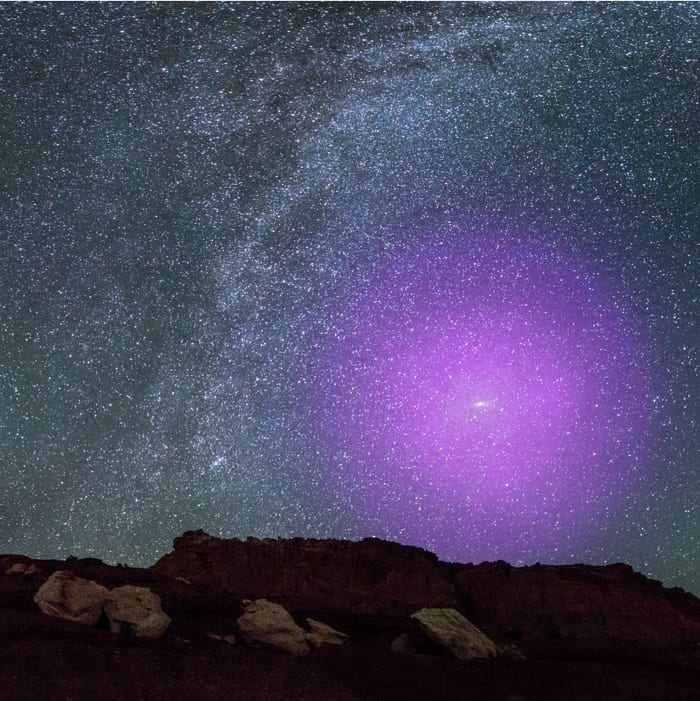
When stargazers look at the night sky, they see a lot of twinkles. But something else is there—only human eyes cannot see it. Galactic haloes are gas clouds that wrap around each galaxy, almost like an atmosphere. The bubble of our closest galactic neighbor, Andromeda, was made visible in 2020.
If the simulation were a real thing in nature, somebody walking his dog at night would see a violet glow 100 times bigger than the Moon. But researchers created the halo for reasons other than to make the horizon pretty at night. Of the two galaxies, the Milky Way’s cloud is the harder one to study. Any information gleaned from Andromeda can provide clues about what our halo got up to in the past and how it will evolve in the future.
To map Andromeda’s invisible atmosphere, scientists watched how ultraviolet light behaved while travelling through the gas. Long story short, this technique traced the outlines of the cloud. It was enormous, reaching 1.85 million light-years into space. Even more surprising, the halo consisted of two shell-shaped formations nestled within each other.
But really, most Earthlings just cared about the pretty violet glow.
9 An Explosion’s Shock Wave

Who does not love an isolated government facility? They spawn rumors of aliens, new technology—and in this case—a remarkable photo. Far from civilization, Canada’s Defence Research and Development agency owns a vast piece of prairie. This is the perfect place to blow up stuff.
In 2015, the agency detonated explosives during a test. Someone at the site took a photo of the fireball and unexpectedly captured the explosion’s shock wave. The latter happens when something travels (or expands) faster than the speed of sound, triggering a sharp change in pressure. Shock waves are usually only visible in water or when they curl away from the bottom of a blast.
But the 2015 image captured a shockwave in the air. What makes the photograph even more exceptional was the clarity. The shape of the shock wave was clearly visible, surrounding the explosion with a bubble-like blur.
8 A Surprising X-Shaped Magnetic Field
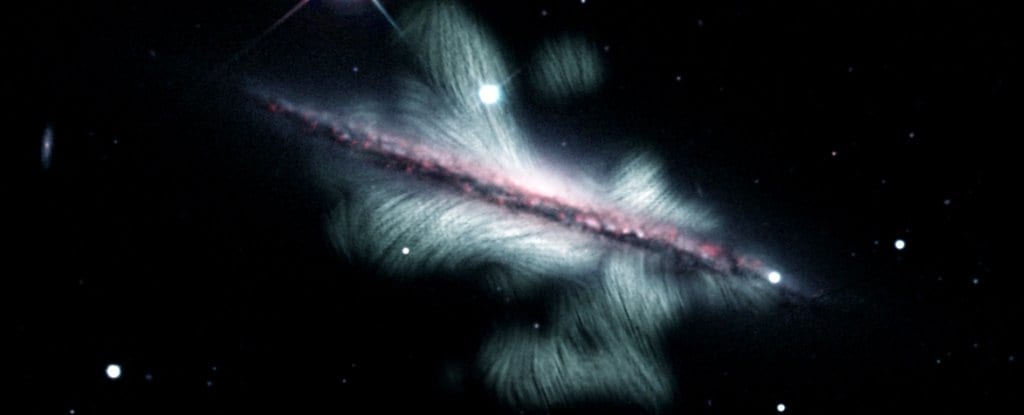
NGC 4217 has a boring name. But the spiral galaxy hit the record books when an image of its magnetic field was created in 2020. Almost nothing is known about how galaxies generate their own fields. But sensing their proportions is not a mystery. In order to remove the cloak of invisibility around a galactic magnetic field, scientists simply measure the speed and behavior of cosmic rays in the area.
The magnetic field of NGC 4217 turned out to be colossal, reaching 22,500 light-years into space. It was also X-shaped. But neither feature was new. There are other spiral galaxies with X-shaped fields that stretch out across thousands of light-years. However, when the image was developed, it revealed mysterious phenomena inside the field that had never been seen before.
For one, giant gas bubbles bobbed around and they were also magnetic. There was another magnetic field that spiralled upwards. The weirdest discovery were loops that were being thrown outward.
7 Gravity Waves Over Australia
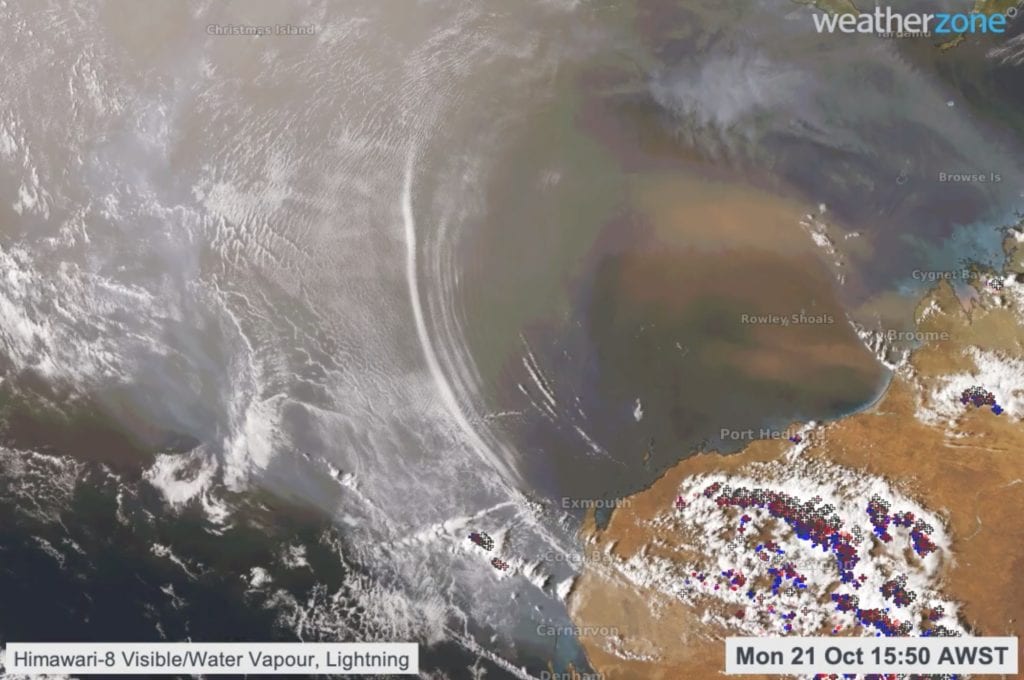
Nobody is arguing that Australian wildlife is weird and wonderful. But apparently, the invisible side of the continent is just as strange. In 2019, a weather satellite snapped something rippling over Australia. A closer look identified the phenomenon as gravity waves.
To be fair, gravity waves occur elsewhere too. But to see them is incredibly rare. Usually invisible, things took an interesting turn when a storm swept cold air into the atmosphere off the northwestern coast. The coolness jostled with the region’s warmer air and produced enough condensation to create curvy clouds.
The clouds were curved because they formed along the crests of the gravity waves, which also made the ripples visible to satellites. The waves themselves were the result of Earth’s gravity trying to bring balance to the atmosphere after the storm caused a chaotic temperature difference.
6 Dark Matter
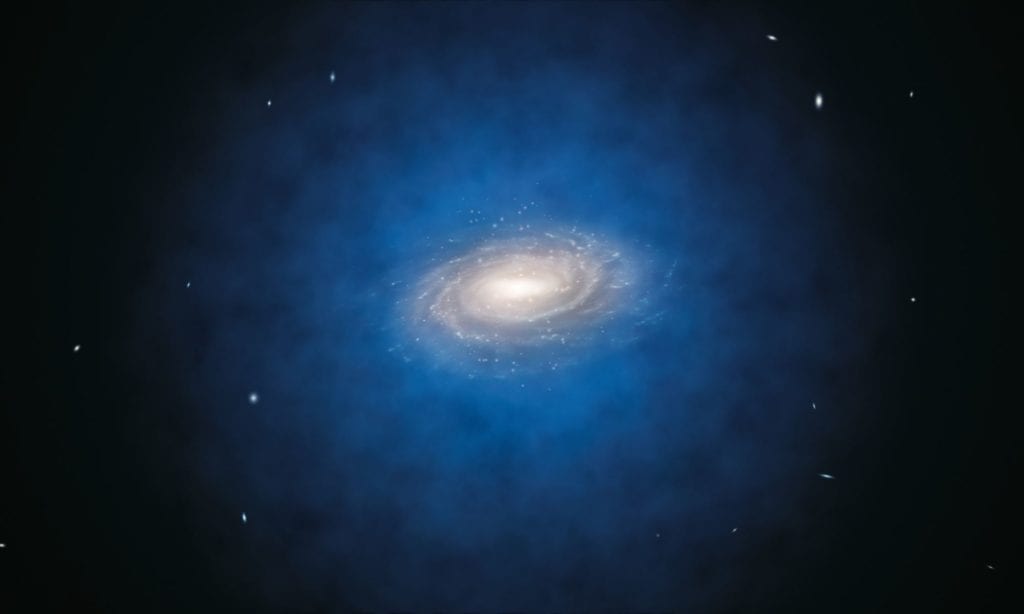
This goop fills 85 percent of the universe. But space being the weird place that it is, black matter is one big ghost. There is no way to directly gaze at the stuff. The only way scientists know that dark matter exists is the way that its gravity nudges other matter and light. There is also a theory that dark matter forms halos around galaxies. Hold that thought.
Researchers recently poured everything they had into a simulation. The Harvard & Smithsonian Center for Astrophysics based the test on a popular theory (that black matter consists of specks called weakly interacting massive particles). To see if the particles behaved the same no matter the size of their world, the simulation created dark matter on a scale across 30 different magnitudes. Sure enough, the dark matter curled in haloes around galaxies. But more encouragingly, it formed haloes at all the mass scales—even the ones too small to see.
Since the same thing happened across the board, the haloes are now recognised as a dark matter feature. Interestingly, the simulation also showed that the rings were fuzzy at the edges and denser near the centre.
60 Stunning Images of The Middle East That Will Make You Forget Its Violent Past
5 Bird Tracks In The Sky

One question haunted Barcelona-shutterbug Xavi Bou for a long time. What do bird tracks look like? But he was not staring at the ground. Bou was gazing up at the sky. His imagination saw snake-like ripples following in the wake of each bird. A few years ago, he found a way to photograph them.
Bou used a video camera to film different species of birds in flight. He then compiled the frames into a single image. The photograph shows each bird’s position advancing, frame-by-frame, to create mesmerizing “tracks” along the paths that birds take.
4 The Speed Of Light In Slow Motion
There is nothing faster than the speed of light (Sorry, Flash). Travelling at 186,000 miles per second (300 million meters per second), nobody knew what the speed of light actually looked like. That’s right. Past tense. In 2019, researchers put together something that matched their quarry—the world’s quickest camera.
Called the T-Cup, it recorded a laser shooting through a bottle of milk. Why moo-juice? The molecules of milk scatter light particles and make them more visible. The T-Cup captured the event by filming an astounding 100 billion frames per second. To make a movie, only 24 frames is needed. Not even light could escape the camera’s wild snapping.
Even so, the speed of light could only be viewed in slow motion (the laser shot through the bottle at a breakneck speed of 2 billionths of a second). The footage showed a blue blur streaking through the milk. While not the most spectacular sight, the achievement was remarkable.
3 The Glow Of Flowers
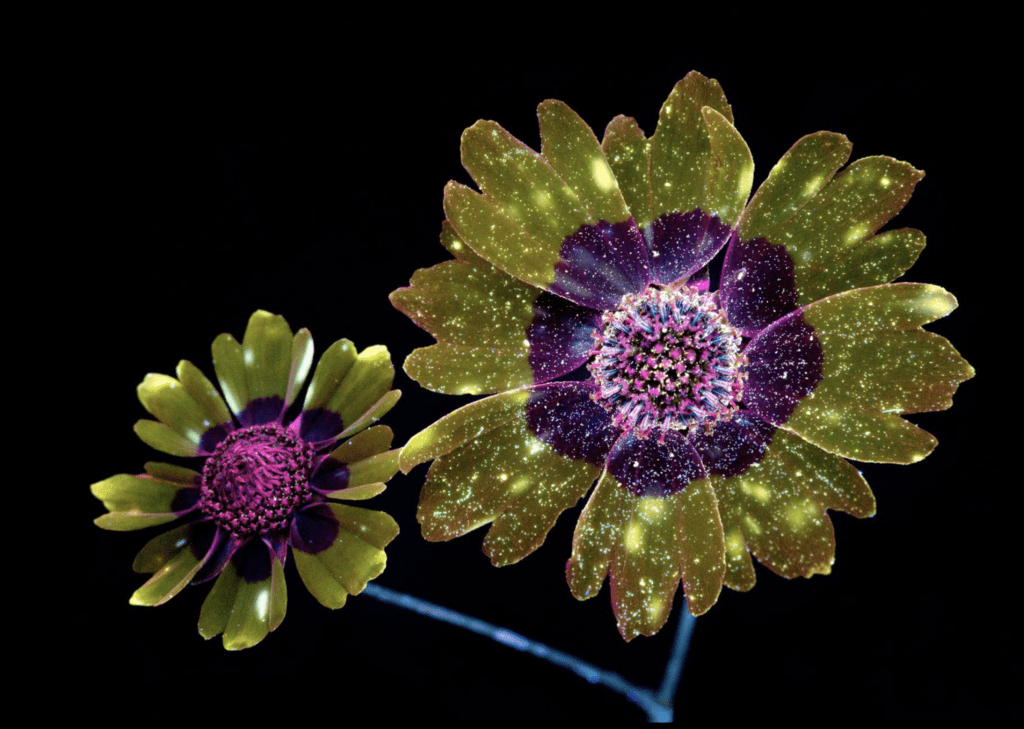
In the world of photography, there is a technique called UVIVF (ultraviolet-induced visible fluorescence photography). This wizardry causes stuff to fluoresce. When a photograph is taken during a UVIVF session, it captures the unseen light that radiates from an object. The results are stunning.
In 2018, photographer Craig Burrows used the technique on flowers. The pictures resembled something from another realm. Unusual colors, sparkles, and glittering hues glowed around the plants.
Researchers still cannot crack the riddle of what role ultraviolet fluorescence plays in nature. However, the photographs of the flowers showed that pollen was especially bright. This added more clout to an old theory that flowers use fluorescence to attract pollinators.
2 A New Breed Of UFO (Maybe)
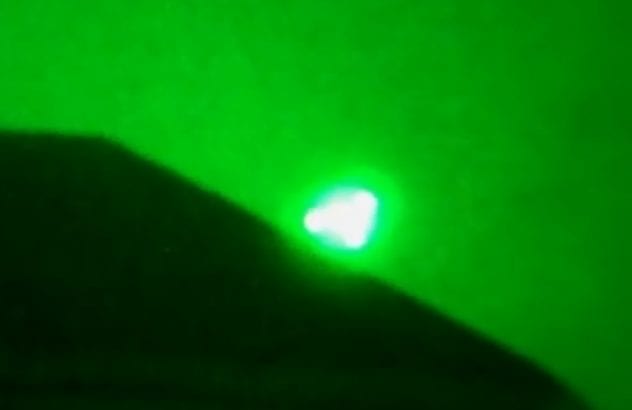
One of the strangest claims to come from the UFO community is that the skies are full of invisible flying objects. Many people have tracked these UFOs with night-vision cameras. The verdict? That there is a new type of UFO that emits infrared light and is otherwise undetectable. Some witnesses have even claimed that they witnessed battles between these crafts.
Sceptics do not agree. They feel that the “invisible fleet” is nothing more than aeroplanes, moths, bats, and satellites magnified by infrared devices. Even the dramatic cases get no love from scientists. When, in 2012, a paranormal society in Texas captured the image of a silent and blazing triangle-shaped UFO, it was binned by scientists as being nothing more than a military drone with infra-red lights.
1 A Trapped Atom
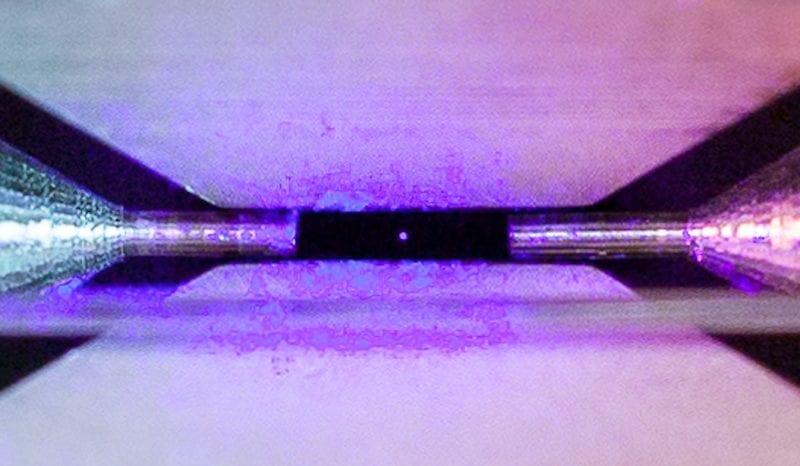
David Nadlinger refused to believe it. Conventional wisdom told him that atoms were too tiny to be seen by the naked eye. But the physicist wanted to gaze upon an atom without special goggles or magnification. In 2018, he succeeded. Delighted, Nadlinger took a photo. He was not the only happy scholar—the image was given the top prize in a prestigious UK science competition.
Nadlinger trapped the atom between electric fields before stabilizing it inside a vacuum chamber. Two needles, 2mm (0.08 in) apart, held the particle between them. A blue-violet laser tinted the atom blue—and made it visible to the naked eye. One day, this feat might help with the creation of quantum computers or something equally techno-worthy. But right now, it offers an amazing opportunity to look directly at the building blocks of matter.
Top 10 Astronomy Photos That Made History
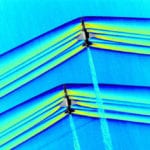


![Top 10 Haunting Images Of Historic Tragedies [DISTURBING] Top 10 Haunting Images Of Historic Tragedies [DISTURBING]](https://listverse.com/wp-content/uploads/2020/05/33758v-150x150.jpg)




